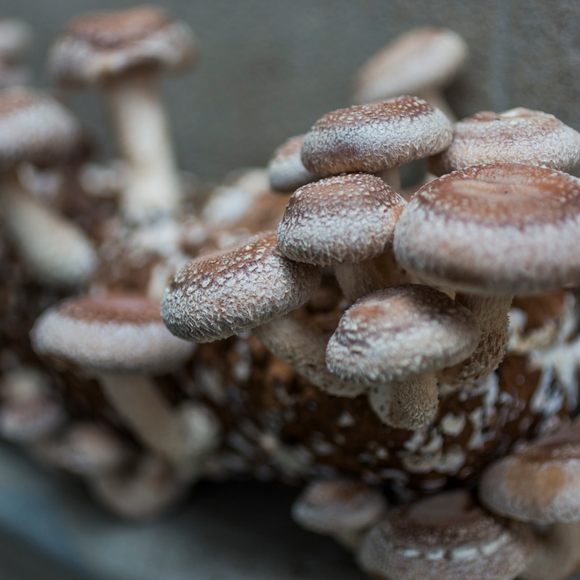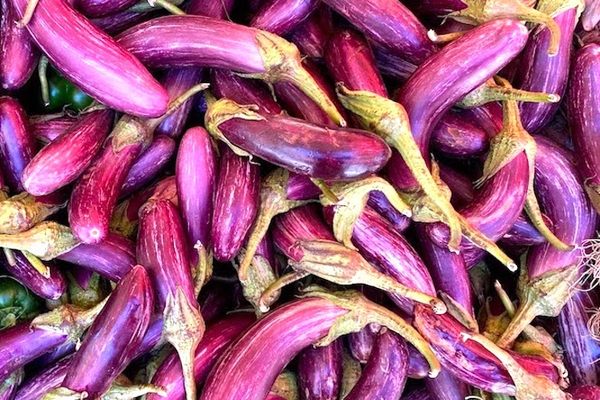Ingredients & Condiments
Brisbane Customs House Mushrooms
The basement of a 19th-century government building provides peak conditions for delicious fungi.
Some restaurants cultivate relationships with local beekeepers, while others cultivate herbs in their back garden. But the chefs of the Brisbane Customs House’s Patina took their commitment to local ingredients one step further. While some may look at the humid basement of a monumental 19th century building and worry about the historic spores that must be growing in its cool crevices, Customs House director Brian Roberts and his crew looked at their building’s basement and thought, “Why not mushrooms?”
Since 2016, the restaurant staff has been cultivating shiitake and oyster varieties within the humid environment of the basement’s thick, stable sandstone walls. It all started with the impregnation of some local logs (yes, “impregnation” is the technical term) from a local mushroom farmer, who coached the Customs crew through proper mushroom care. Then, the Customs House group was set up with logs of their own. Every week, they take new ’shroom-filled logs home, store them in a fridge overnight to stimulate the growth process, and then keep them in the cellar. A week later, voila! Fresh mushrooms ready to adorn the restaurant’s signature nicola-potato-and-ricotta gnocchi. While the basement conditions approach the perfect 85 percent humidity required for optimal mushroom thriving, occasional heat spells mean that the mushrooms sometimes require a bit of additional ice water and care.
This mushroom colony isn’t the only unique thing about the Customs House Restaurant. The three-story Victorian Classical Style building, complete with columns and a grand arched copper dome, began its life as an actual customs house. In the 1880s, Brisbane’s river port had become so busy that Queensland government officials commissioned a Customs building as grand as the city’s aspirations. The resulting building, designed by the Colonial Architects Office, retains its splendor even as it’s currently dwarfed (in height, at least) by modern skyscrapers.
The coming of modern container shipping in the mid 20th century spelled the end of the Customs House’s use as a center for shipping regulation. But in 1994, the building began its second life as a downtown outpost of Queensland University, including a gourmet restaurant. To this day, visitors can enjoy high tea or meals in the building’s Patina restaurant—complete, of course, with the restaurant’s signature basement-grown mushrooms. Call it hyper-local dining.
Where to Try It
-
Patina at the Brisbane Customs House Website
399 Queen St., Brisbane, 4000, AustraliaThis is the historic building's fine dining restaurant.
Written By
 Reina Gattuso
Reina Gattuso
Sources
- www.abc.net.au/news/2016-03-04/brisbanes-customs-house-cellar-growing-mushrooms/7218334
- www.uq.edu.au/news/article/2016/03/customs-house%E2%80%99s-delicious-cellar-secret
- www.brisbanetimes.com.au/national/queensland/customs-house-cellar-home-to-some-delicious-fungi-20160302-gn8rc1.html
- customshouse.com.au/history/


















